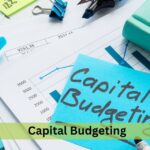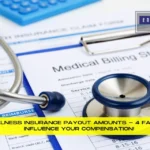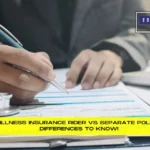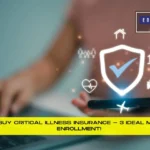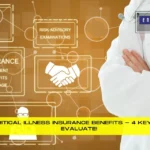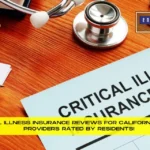How To Pay Off Debt With No Money. Breaking free from the cycle of debt when you’re strapped for cash might seem like a monumental task, but it’s not impossible. It takes a blend of strategic planning, discipline, and an optimistic yet realistic mindset. Here’s a roadmap to help you regain control of your financial life.
Table of Contents
Assess Your Financial Health:
- Know What You Owe: Make a list of all your debts, including interest rates and minimum payments. This is your starting point; you can’t tackle what you don’t know.
- Prioritize Debts: Identify which debts are urgent, like those with high interest rates, and tackle them first. This will save you money in the long run.
- Evaluate Your Income: Take a close look at all your income streams, however small they may be. Knowing your total income will help you make realistic plans.
Make a Plan:
- Budget: Draft a no-frills budget that cuts out non-essential spending. Be brutal in your cuts; your financial freedom is at stake.
- Minimum Payments: Make the minimum payments on all your debts to avoid further late fees and penalties.
- emergency fund: Aim to stash away a small emergency fund, even if it’s just a few dollars a week. This will help you avoid accumulating more debt when unplanned expenses arise.
Implement Creative Strategies:
- Negotiate with Creditors: Contact your creditors to negotiate terms, such as a lower interest rate or a more manageable payment plan. Some might even agree to settle for a lesser amount.
- Debt Snowball vs Debt Avalanche: Decide on a strategy. Debt Snowball focuses on paying off the smallest debts first for motivational wins, while Debt Avalanche targets the debts with the highest interest rates.
- Side Hustles: Consider taking on additional work to bring in extra income. Every extra dollar can be directed toward your debt.
- Sell Unused Items: Declutter your home and sell items you don’t need. Use this money to pay down debt.
Monitor and Adjust:
- Track Your Progress: Keep tabs on how much you’ve paid off and celebrate small victories. It will keep you motivated.
- Review and Adjust: As your financial situation changes, make sure to update your strategy. Flexibility is crucial for long-term success.
Get Professional Help:
- Credit Counseling: Sometimes, the situation might be too complex to handle alone. In such cases, it’s wise to seek advice from a certified credit counselor.
- Legal Options: If you’re completely overwhelmed, you might want to explore legal options such as debt settlement or bankruptcy. Consult a financial advisor for personalized advice.
Remember, you didn’t accumulate this debt overnight, so it’s unrealistic to expect it to disappear immediately. It will take time, effort, and a lot of self-discipline. But with a focused approach, you can break the cycle of debt and regain control of your life, one step at a time.
- For Expert Financial Insights And Guidance, You Can Visit Our Sister Site – ArabsGeek.com Now!
- Curiosity Piqued? Dive Into the Most Captivating Financial Content by Visiting Our Homepage!
- Unlock Exclusive Business Opportunities! 🚀 Connect with Us Now at our Email: [email protected]!
How To Pay Off Debt With Little Money
Paying off debt with limited funds is undoubtedly a tough endeavor, but it’s far from impossible. With a strategic approach, you can chip away at your debt, regain your financial freedom, and take control of your future. Here’s a guide on how to tackle this financial puzzle:
Understand Your Financial Landscape:
- Create a Debt Inventory: List out all your debts, noting the balance, interest rates, and minimum payments for each. Having a comprehensive view of your debt situation is crucial.
- Scrutinize Your Income: Take a hard look at your income sources and how reliable they are. Having a clear picture of your cash flow will help you devise a more effective plan.
Build a Bare-Bones Budget:
- Prioritize Expenses: Make a stringent budget that only includes necessities like food, housing, and utilities. This will help you maximize the money you can allocate toward debt repayment.
- Cut Down Costs: Eliminate or scale down non-essential expenses. This might mean cancelling subscriptions, cooking at home instead of dining out, or using public transport instead of owning a car.
Strategize:
- Debt Snowball or Debt Avalanche: Choose a debt repayment method. The Debt Snowball focuses on paying off the smallest debts first for motivational wins, while the Debt Avalanche aims to eliminate high-interest debts first.
- Minimum Payments: Aim to make at least the minimum payments on all your debts to avoid penalties and extra fees. If you can pay a little more, even better.
Creative Approaches:
- Negotiate with Creditors: Don’t hesitate to reach out to your creditors. You can often negotiate better terms, lower interest rates, or even temporary relief from payments.
- Side Gigs and Hustles: Consider part-time work, freelancing, or selling unused items. Use the extra money to pay off debt.
- Utilize Windfalls: Any unexpected money—like tax refunds, gifts, or bonuses—should go straight toward debt repayment.
Be Consistent and Keep Track:
- Track Your Progress: Consistently monitor how much you’ve paid off. Celebrating small wins can provide the motivation to keep going.
- Adjust as Necessary: As your financial situation changes, be prepared to adapt your strategy. If you secure a better-paying job, for example, revise your debt repayment plan to expedite the process.
Seek Professional Guidance:
- Consult a Credit Counselor: If your debt situation seems insurmountable, professional advice from a credit counselor can offer invaluable insights tailored to your unique situation.
By taking these steps, you’ll be employing a strategic, multi-pronged approach to debt repayment, even when your resources are limited. It’s all about making the most of what you have and remaining committed to your financial well-being.
How To Pay Off Debt With No Extra Money
Tackling debt without any extra money to spare might sound like a Sisyphean task, but don’t lose hope. While the road ahead may be challenging, it’s possible to make headway through a mix of strategy, perseverance, and smart financial moves. Here’s how you can pay off debt even when you’re strapped for cash:
Scrutinize Your Financial Situation:
- Inventory Your Debt: List all your outstanding debts, their interest rates, and minimum payments. Having a clear overview is the first step toward tackling the issue.
- Examine Your Budget: Take an in-depth look at your income and essential expenses. Cut out the non-essentials, as painful as that may be.
Smart Budgeting:
- Prioritize Essentials: Focus your budget solely on essential needs: food, shelter, utilities, and minimum debt payments.
- Trim the Fat: Cut down on discretionary spending. Cancel unused subscriptions, buy generic brands, or use public transport instead of a car, where possible.
Make the Minimums Count:
- Keep Up with Minimum Payments: Always pay at least the minimum to avoid late fees and additional interest. Missing payments can hurt your credit score and make your financial situation worse.
- Round Up Payments: If you can manage even a few extra cents or dollars over the minimum payment, it can make a difference over time.
Negotiate Your Way:
- Talk to Creditors: Reach out to your creditors to negotiate for better interest rates or more manageable payment plans. They’re often willing to make concessions if it means they’ll get paid eventually.
- Consider Consolidation: If you have multiple debts, especially high-interest ones, look into consolidation options. This could result in a lower overall payment.
Create Small Windfalls:
- Sell Unwanted Items: Got things you don’t need? Sell them online or through a garage sale and use the proceeds to make extra payments.
- Cash in Rewards: If you have credit card rewards or cash-back options, consider using them to make a dent in your debt.
Make the Most of What You Have:
- Use Financial Gifts Wisely: Should you come into any unexpected money, like a gift or tax return, apply it directly to your highest-interest debt.
- Barter Services: If you have skills that are in demand, consider bartering them for things you need, thus freeing up some cash to pay towards your debt.
Seek Expert Advice:
- Free Credit Counseling: Many organizations offer free credit counseling services that can help you better understand your financial situation and offer actionable advice.
- Know Your Rights: Some debts may be past the statute of limitations for legal collection. Make sure you’re not paying something you’re not legally obligated to pay anymore.
While it’s a challenging endeavor, remember that you’re taking steps toward financial freedom. It will require sacrifices and tough decisions, but by staying committed and making smart moves, you can slowly chip away at your debt and regain control of your financial future.
How To Pay Off Credit Card Debt With No Money
Facing credit card debt when you’re cash-strapped might feel like you’re stuck between a rock and a hard place, but don’t lose heart. Although the circumstances are far from ideal, there are ways to make progress and navigate this financial maze. Let’s look at some strategies to help you tackle credit card debt with limited funds:
Get a Handle on Your Debt:
- Debt Inventory: Your first step is to list out all the credit cards you owe, their balances, interest rates, and minimum payments. This is crucial for creating a plan.
- Budget Analysis: Evaluate your income and essential living expenses. The goal here is to identify how much, if any, money is available for debt repayment.
Tighten Your Budget:
- Essentials First: Allocate money to absolute necessities like rent, utilities, and food.
- Cut Non-Essentials: This means trimming down on leisure, dining out, and even your daily coffee run. The idea is to free up even a tiny amount that can be redirected toward your debt.
Navigate Minimum Payments:
- Meet Minimum Obligations: Always make at least the minimum payments to avoid additional fees and a hit to your credit score.
- Scrap Extra Funds: Any additional money you can spare, even if it’s just a couple of dollars, should go toward the card with the highest interest rate.
Negotiate, Negotiate, Negotiate:
- Contact Your Credit Card Companies: Many issuers are willing to negotiate interest rates, especially if you’re facing financial hardship. Explain your situation and ask for a temporary reduction in interest rates or a more manageable payment plan.
- Explore Hardship Programs: Some credit card companies offer hardship programs that lower your minimum payment or interest rate temporarily.
Generate a Little Extra:
- Sell What You Can: Have unused items collecting dust? Sell them online or at a yard sale and use the proceeds to pay down debt.
- Odd Jobs: Picking up a temporary gig, even if it’s irregular, can help you gather funds to pay off your card debt.
Make Every Dollar Count:
- Use Windfalls Wisely: If you unexpectedly come into some money, like a tax refund or a gift, use it to make a significant payment on your highest-interest card.
- Cash Back and Rewards: If you have any rewards or cash back on your credit cards, see if they can be applied to your balance.
Seek Professional Advice:
- Credit Counseling Services: These agencies can offer you tailored advice and even help negotiate with creditors on your behalf.
- Bankruptcy as a Last Resort: If your debt is overwhelming and other options have been exhausted, consult a financial advisor to discuss the pros and cons of filing for bankruptcy.
No one ever said paying off debt without extra money would be easy, but it is possible. You’ll need a robust plan, a disciplined approach, and a willingness to make sacrifices. Every step you take, no matter how small, brings you closer to financial freedom.
How To Get Out Of Debt With No Money And Bad Credit
If you find yourself in the precarious situation of having no extra money and a bad credit score, climbing out of debt can seem virtually impossible. However, don’t give up just yet. While it’s an uphill battle, there are strategies that can help you dig your way out. Here’s a practical guide to help you escape the clutches of debt, even when the odds seem stacked against you:
Assess the Scale of Your Debt:
- Inventory Your Debt: Make a comprehensive list of all your debts, their interest rates, and the minimum payments due. This gives you a clearer picture and sets the stage for your debt repayment plan.
- Evaluate Your Budget: Understand where every penny is going. Categorize your spending into necessities and luxuries. The aim is to identify areas where you can cut back.
Cut Costs Wherever You Can:
- Prioritize Essentials: Make sure you can cover basic needs—food, shelter, utilities, and at least the minimum payments on your debt.
- Eliminate Non-Essentials: Anything that doesn’t fall into the ‘essential’ category should be cut or minimized. Think eating out, subscription services, or even your morning latte.
Tackle the Minimum Payments:
- Always Pay the Minimum: As hard as it might be, keeping up with the minimum payments prevents your debt from growing and safeguards your credit score from dropping even further.
- Scrounge for Extra Cash: Every little bit counts. Use any extra money you find to make payments, no matter how small, towards your debt with the highest interest rate.
Navigate Your Bad Credit:
- Seek Lower Interest Rates: Your bad credit may make this difficult, but it’s worth asking creditors for a lower interest rate. Any reduction can help make your debt more manageable.
- Credit Union Loans: If you’re a member of a credit union, you may qualify for a small loan at a more favorable interest rate, which you can use to pay off higher-interest debt.
Generate Some Revenue:
- Sell Unwanted Items: Turn your clutter into cash by selling items you no longer need. Use the proceeds to pay down your debt.
- Freelance or Gig Work: Use your skills to pick up freelance jobs or gigs. It won’t be a stable income but could provide the extra cash needed to tackle your debt.
Look Into Debt Relief Options:
- Debt Settlement: Companies can negotiate with creditors to settle your debt for less than you owe. However, this will significantly impact your credit score.
- Bankruptcy: This should be your absolute last resort. While it will annihilate your credit score, it can provide you with a clean slate.
Seek Professional Help:
- Consult a Credit Counseling Agency: They can provide you with actionable advice and might help negotiate better terms with your creditors.
- Legal Advice: If your debt has led to legal issues, consult a lawyer to understand your rights and options.
Although your journey to financial freedom won’t be easy, it’s crucial to stay committed. With discipline, determination, and a well-thought-out plan, you can gradually improve your financial situation, even when it feels like the odds are against you.
How To Pay Off Debt With No Income
When you’re dealing with debt and have no steady income, it’s like navigating through a financial storm with no compass. Despite how hopeless this scenario may seem, there are still ways to manage and reduce your debt burden. Here’s a step-by-step guide to help you handle your debt while you’re in this tough spot:
Know Your Financial Landscape:
- Debt Inventory: Create a detailed list of all your debts, their interest rates, and minimum monthly payments. This offers clarity and allows you to formulate a strategy.
- Assess Resources: You may not have a consistent income, but do you have any savings, assets, or items that can be sold for immediate cash? Knowing what you have is half the battle.
Eliminate Unnecessary Expenses:
- Prioritize: Your first responsibility is to ensure you have a roof over your head and food on the table. Direct whatever resources you have to essential needs first.
- Cut Costs: Now is the time to cancel subscriptions, eat in, and halt any discretionary spending. Redirect whatever money you save toward your debt.
Approach Your Creditors:
- Negotiate: Contact your creditors as soon as possible to discuss your situation. They may be willing to work out an adjusted payment plan, or even temporarily reduce or suspend your monthly payments.
- Explore Hardship Programs: Some lenders offer hardship programs that can provide temporary relief by lowering interest rates or payments.
Leverage Assets:
- Sell What You Can: Got stuff collecting dust? Consider selling belongings you don’t need. Use the proceeds to pay down debt.
- Liquidate Investments: This is risky and should only be considered for dire emergencies. If you have investments, consider the pros and cons of liquidating them to cover your debts.
Seek Non-Traditional Income:
- Freelance or Odd Jobs: If regular employment isn’t an option, look for freelance work or odd jobs that can help you generate some cash flow.
- Borrow Carefully: While it’s not ideal, borrowing money from a family member or friend is preferable to taking out a high-interest loan. Make sure to set terms and pay them back as soon as you can.
Utilize Government and Non-Profit Assistance:
- Social Services: Investigate if you’re eligible for unemployment benefits, food assistance, or other social services that can free up money for debt repayment.
- Credit Counseling: Nonprofit credit counseling services can offer valuable advice and may be able to negotiate with your creditors for better terms.
Keep Track and Adjust:
- Monitor Expenses: Keep a close eye on every dollar that goes out. Make adjustments to your plan as necessary.
- Stay Informed: Financial rules and relief programs change. Stay updated on any legal changes that might affect your situation or offer relief.
Facing debt with no income is undeniably stressful, but don’t let it paralyze you. Taking proactive steps, no matter how small, can make a world of difference. You may not be able to eliminate your debt overnight, but you can make strides in the right direction.
How To Pay Off Debt With Debt
Paying off debt with other debt sounds counterintuitive, but it can be a strategic approach if executed wisely. However, this is a high-stakes game and you need to tread cautiously to ensure you don’t end up digging a deeper hole for yourself. Here’s how you can navigate this complex financial strategy:
Understand Your Debt Landscape:
- List Your Debts: Detail all your debts, their corresponding interest rates, and the monthly payments required. The goal is to identify which debts are the most expensive in terms of interest rates.
- Examine Your Budget: Do an exhaustive analysis of your income and expenses to understand what room you have for making debt payments.
Explore Debt Instruments:
- personal loans: Consider taking a personal loan with a lower interest rate to pay off higher-interest debts. Make sure to read the fine print for any hidden fees or prepayment penalties.
- Balance Transfer Cards: If your debt is mostly from credit cards, you can use a balance transfer credit card to consolidate your debt under a lower or zero interest rate. But keep an eye on when the promotional period ends.
- Home Equity Loans: If you’re a homeowner, you might consider using your home’s equity to pay off high-interest debts. But be cautious, as failure to repay can put your home at risk.
- 401(k) Loans: Some retirement plans allow you to borrow against your 401(k). Though risky, the interest you pay goes back into your account. However, if you fail to pay back on time, penalties are severe.
Execute the Plan:
- Prioritize: Use the newly acquired debt to immediately pay off the high-interest debts.
- Restructure Payments: With the high-interest debt out of the way, focus on paying off the new debt as quickly as possible.
- Stick to a Budget: Make sure you don’t accrue more debt. Stick strictly to a budget that allows you to make timely payments towards your new loan.
Monitor and Adjust:
- Regular Check-ins: Periodically revisit your budget and debt situation to make sure you’re on track.
- Emergency Buffer: Keep a small reserve fund for emergencies so that unexpected expenses don’t derail your plan.
Seek Professional Guidance:
- Consult a Financial Advisor: Before making any major moves, consult a financial advisor for personalized guidance tailored to your financial situation.
- Credit Counseling: A credit counselor can help you understand your options and may negotiate better terms with creditors.
The key to successfully paying off debt with other debt is discipline. The new loans should only be used to pay off the existing ones, and not for any other expenses. It’s a complex strategy that carries its own risks, so proceed with caution and make informed decisions. Done correctly, this approach can save you money and speed up your journey to financial freedom.
How To Pay Off Debt On A Budget
Paying off debt while on a tight budget may feel like trying to empty an ocean with a teaspoon, but don’t lose heart. It’s a tough situation, but you can make substantial progress by adopting a disciplined and strategic approach. Here’s how to kick-start your journey toward financial freedom without burning a hole in your pocket:
Lay the Groundwork:
- Inventory Your Debt: List out all your debts, taking note of interest rates, minimum payments, and due dates. Understanding your debt profile is the first step towards forming a budget-friendly repayment strategy.
- Review Your Budget: Examine your income and monthly expenses to identify areas where you can cut back. The objective is to free up some money to direct towards debt repayment.
Cut the Fat:
- Trim Non-Essentials: Cancel unnecessary subscriptions, dine in more often, and cut back on shopping. Every dollar saved is a dollar that can go towards your debt.
- Coupon and Discount Hunt: Use coupons, shop sales, or even consider buying used items. The aim is to reduce your regular expenses to make room for debt payments.
Prioritize Your Debt:
- High-Interest First: Focus on paying off debts with the highest interest rates first, while making minimum payments on others. This is commonly known as the ‘avalanche method.’
- Snowball Approach: Alternatively, you could start by paying off the smallest debts first to gain momentum. The sense of accomplishment can be motivating.
Make Your Money Work:
- Round-Up Payments: Even rounding up your payments to the nearest ten or twenty dollars can shave time and interest off your debts.
- Utilize Windfalls: If you get unexpected money like tax refunds, bonuses, or gifts, consider using at least a portion to pay off debt.
- Part-time or Freelance Work: If possible, pick up some extra work to accelerate your debt repayment. Even a small additional income can make a big difference.
Stay Committed:
- Track Progress: Monitor your spending and regularly update your budget. Celebrate small victories to stay motivated.
- Avoid New Debt: Resist the urge to use credit cards or take out new loans, unless absolutely necessary.
- Automate Payments: Set up automatic payments to ensure you never miss a due date. Late fees can derail your repayment efforts.
Seek Help:
- Credit Counseling: Free or low-cost credit counseling services can offer valuable insights and strategies for debt repayment.
- Talk to Your Creditors: Don’t hesitate to contact your creditors to negotiate terms or ask for lower interest rates. Many are willing to work with you if it means you’ll be able to make consistent payments.
Keep the Faith:
- Be Patient and Consistent: Progress might be slow, but consistency is key. Stick to your plan and make adjustments as needed.
Paying off debt on a shoestring budget is undeniably challenging, but it’s not impossible. Take small, calculated steps and remain committed to your goal. Every payment, no matter how minimal, is a step towards reclaiming your financial freedom.
Ways To Pay Off Debt With Low Income
Tackling debt on a low income might seem like an insurmountable task, but it’s far from impossible. All it takes is a strategic plan, unwavering discipline, and the right mindset. With a keen focus on your financial health, you can turn things around one step at a time. Here’s how:
Get a Clear Picture:
- Know Your Numbers: Make a comprehensive list of all your debts, monthly expenses, and income. Highlight interest rates, minimum payments, and due dates for each debt. This is your starting point.
- Create a Realistic Budget: Factor in your low income and make a strict budget that includes essentials and the bare minimum for non-essentials.
Stretch Every Dollar:
- Cut Corners: Eliminate unnecessary expenses like that daily latte or premium streaming subscriptions. Your aim is to redirect these funds towards debt reduction.
- Negotiate Bills: Contact service providers for utilities, internet, and even credit card companies to negotiate lower rates or better payment terms.
- Shop Smart: Use coupons, discounts, and cash-back offers whenever possible. Buy in bulk and consider generic brands over name brands.
Prioritize and Plan:
- Focus on High-Interest Debt: The ‘Debt Avalanche’ method advocates for paying off the debt with the highest interest rate first while making minimum payments on the rest.
- The Snowball Method: Alternatively, you can opt for the ‘Debt Snowball’ method, where you pay off the smallest debts first to build momentum and motivation.
Maximize Income:
- Side Hustles: Think about ways to generate extra income, be it freelance work, part-time jobs, or selling unused items.
- Windfalls and Bonuses: Use unexpected income like tax returns or gifts exclusively for debt repayment.
- Government and Charity Assistance: Look into welfare programs, food banks, or community services that can help lighten your financial load.
Engage with Creditors:
- Negotiate Terms: Don’t shy away from speaking to your creditors about restructuring your debt or asking for reduced interest rates.
- Settle Debts: In extreme cases, negotiate a debt settlement where you pay a lump sum that’s less than the full amount owed. However, this should be a last resort as it will impact your credit score.
Accountability and Mindset:
- Track Progress: Regularly update your budget and monitor your spending. Keep tabs on how much debt you’ve paid off.
- Stay Informed: Read up on personal finance, listen to podcasts, or even consult a financial advisor if possible.
- Celebrate Small Wins: Paying off a credit card or clearing a loan is an accomplishment. Allow yourself small, budget-friendly celebrations to keep the momentum going.
Keep the End Goal in Sight:
- Be Consistent: You’re in this for the long haul. Even when progress feels slow, remember that every dollar paid is a step closer to financial freedom.
Remember, paying off debt with a low income is a marathon, not a sprint. Be patient, stay disciplined, and keep your eyes on the prize: a debt-free life that offers you a fresh start and newfound financial stability.


